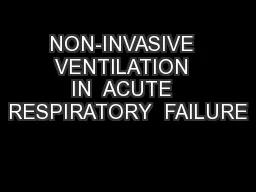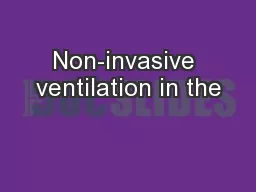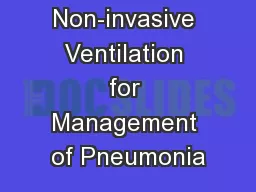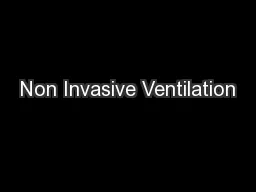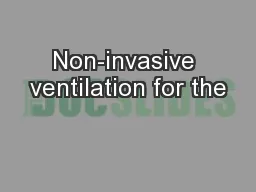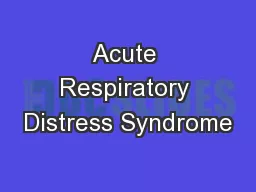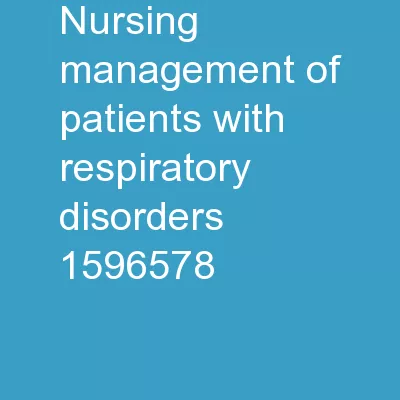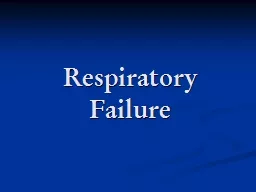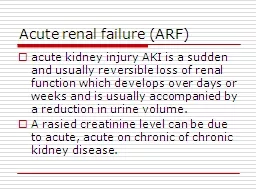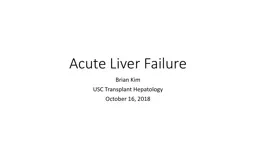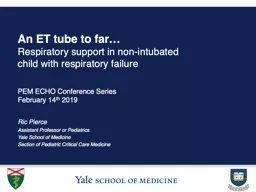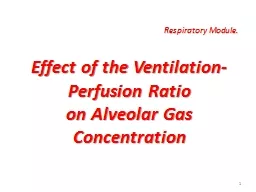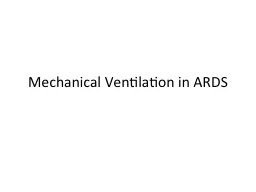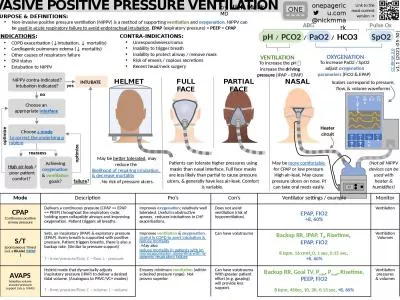PPT-NON-INVASIVE VENTILATION IN ACUTE RESPIRATORY FAILURE
Author : tawny-fly | Published Date : 2017-11-10
Virginia Chung MD Chief Pulmonary amp Critical Care Medicine Jacobi Medical Center January 30 2013 OUTLINE Acute respiratory failure Definitions Pathophysiology
Presentation Embed Code
Download Presentation
Download Presentation The PPT/PDF document "NON-INVASIVE VENTILATION IN ACUTE RE..." is the property of its rightful owner. Permission is granted to download and print the materials on this website for personal, non-commercial use only, and to display it on your personal computer provided you do not modify the materials and that you retain all copyright notices contained in the materials. By downloading content from our website, you accept the terms of this agreement.
NON-INVASIVE VENTILATION IN ACUTE RESPIRATORY FAILURE: Transcript
Download Rules Of Document
"NON-INVASIVE VENTILATION IN ACUTE RESPIRATORY FAILURE"The content belongs to its owner. You may download and print it for personal use, without modification, and keep all copyright notices. By downloading, you agree to these terms.
Related Documents

